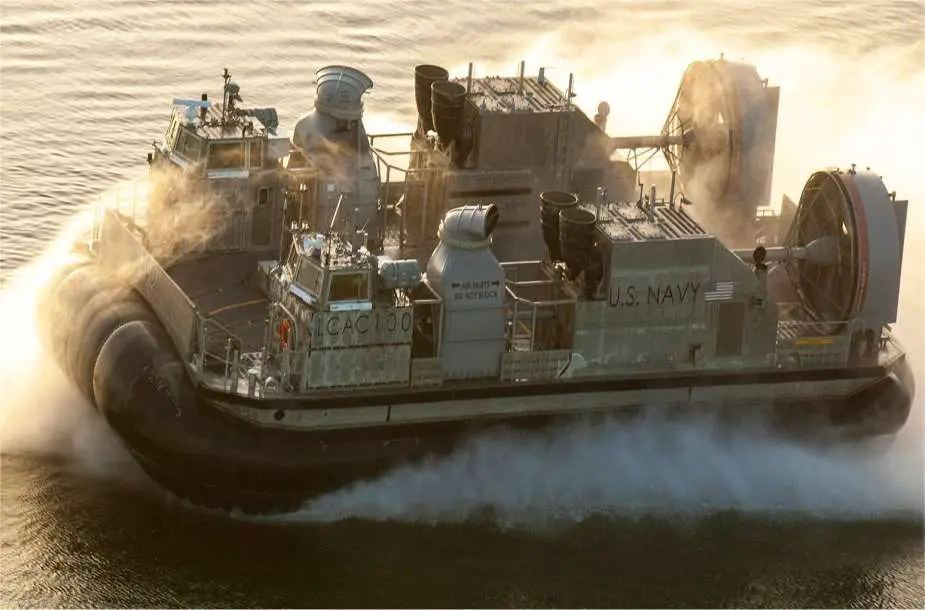Breaking news
Textron Systems Wins $241M Contract for Hovercraft SSC LCAC 100 Class Vessels.
American company Textron Systems Corp., headquartered in New Orleans, Louisiana, has secured a substantial contract valued at $241 million from the United States Department of Defense (DOD). The contract, announced by the United States DoD (Department of Defense) on August 4, 2023, is directed toward the procurement of LCAC 100 Class material and non-recurring activities, with the ultimate goal of facilitating the construction of five Ship to Shore Connector (SSC) Landing Craft Air Cushion (LCAC) 100 Class vessels.
Follow Navy Recognition on Google News at this link
 The Ship-to-Shore Connector (SSC) is a hovercraft specifically designed for the United States Navy. (Picture source: Textron Systems)
The Ship-to-Shore Connector (SSC) is a hovercraft specifically designed for the United States Navy. (Picture source: Textron Systems)
US Company Textron, Inc, based in New Orleans, was granted a $212.7 million fixed-priced incentive-fee contract by the US Navy on July 6, 2012. The agreement was for the meticulous design and creation of a Ship-to-Shore Connector (SSC) test and training craft. Additionally, the contract encompassed the possibility of producing eight more crafts, a clause that could raise the total contract's worth to $570.4 million. The initial fabrication of the first nine SSCs kicked off in mid-November 2014 by Textron. Delivery was set for 2017, with the aim of achieving initial operating capability by 2020. Textron has the capacity to manufacture up to 12 SSCs per annum. On February 6, 2020, the first SSC was delivered.
The Ship-to-Shore Connector (SSC) is a hovercraft specifically designed for the United States Navy, with the purpose of transporting equipment, weapons, and personnel from amphibious ships to the shores. This hovercraft can carry up to 74 tons capacity. This versatile capability extends beyond conventional military applications, encompassing humanitarian missions aimed at delivering crucial resources to disaster-stricken areas.
Although based on the design of the Landing Craft Air Cushion (LCAC), the SSC stands out with several notable features. Its cockpit will feature a two-person control system with joystick-type controls, and it will be powered by four more powerful and efficient Rolls-Royce MT7 gas turbines compared to the engines used in the LCAC. The use of composite materials and aluminum alloys in the construction of the SSC will also enhance its corrosion resistance.
LCACs are constructed with configurations, dimensions, and clearances akin to the preceding legacy LCACs they are replacing. This meticulous design approach guarantees seamless compatibility between the new air cushion vehicle and pre-existing well-deck-equipped amphibious ships, including the Expeditionary Sea Base and the Expeditionary Transfer Dock.
Furthermore, the SSC will be equipped with an advanced skirt to reduce drag and the vessel's weight. Its simpler and more efficient drivetrain system, with a gearbox on each side, will reduce the number of parts, and maintenance requirements, and increase reliability. The SSC is projected to reach a maximum speed of 50 knots (58 mph; 93 km/h).


























